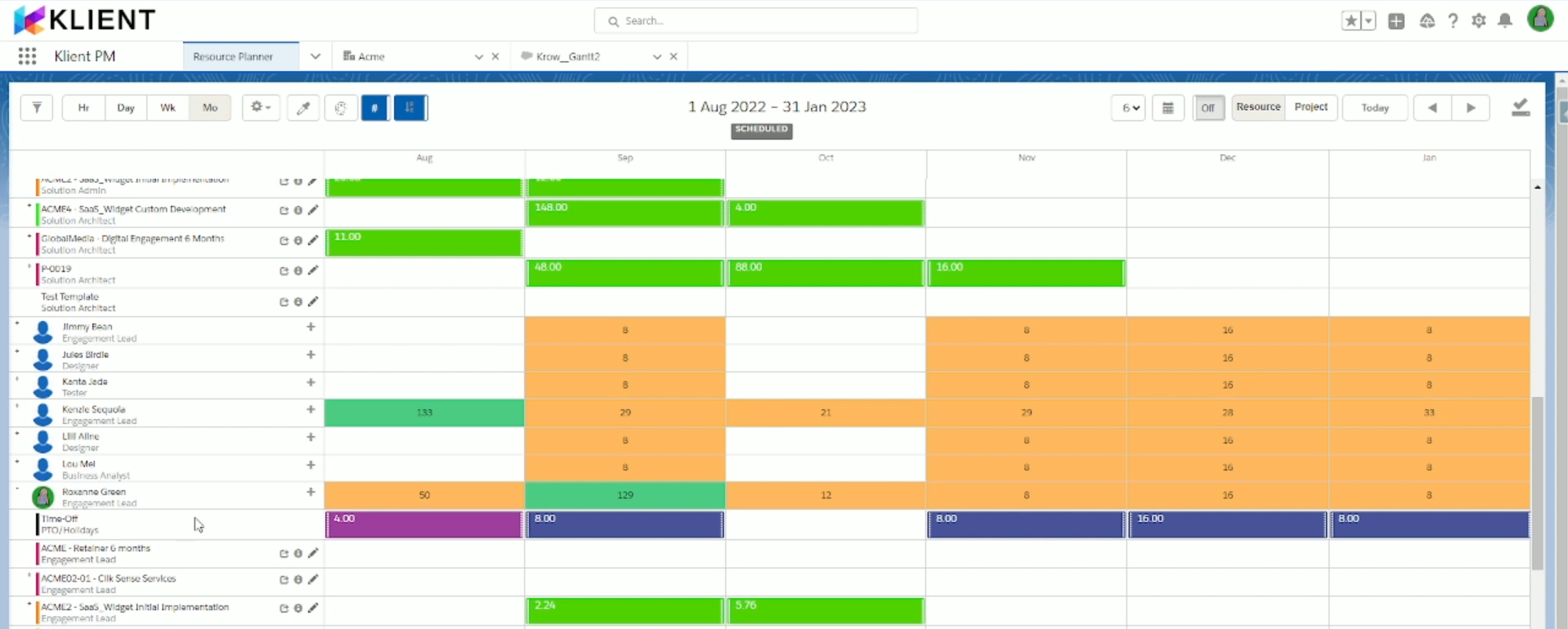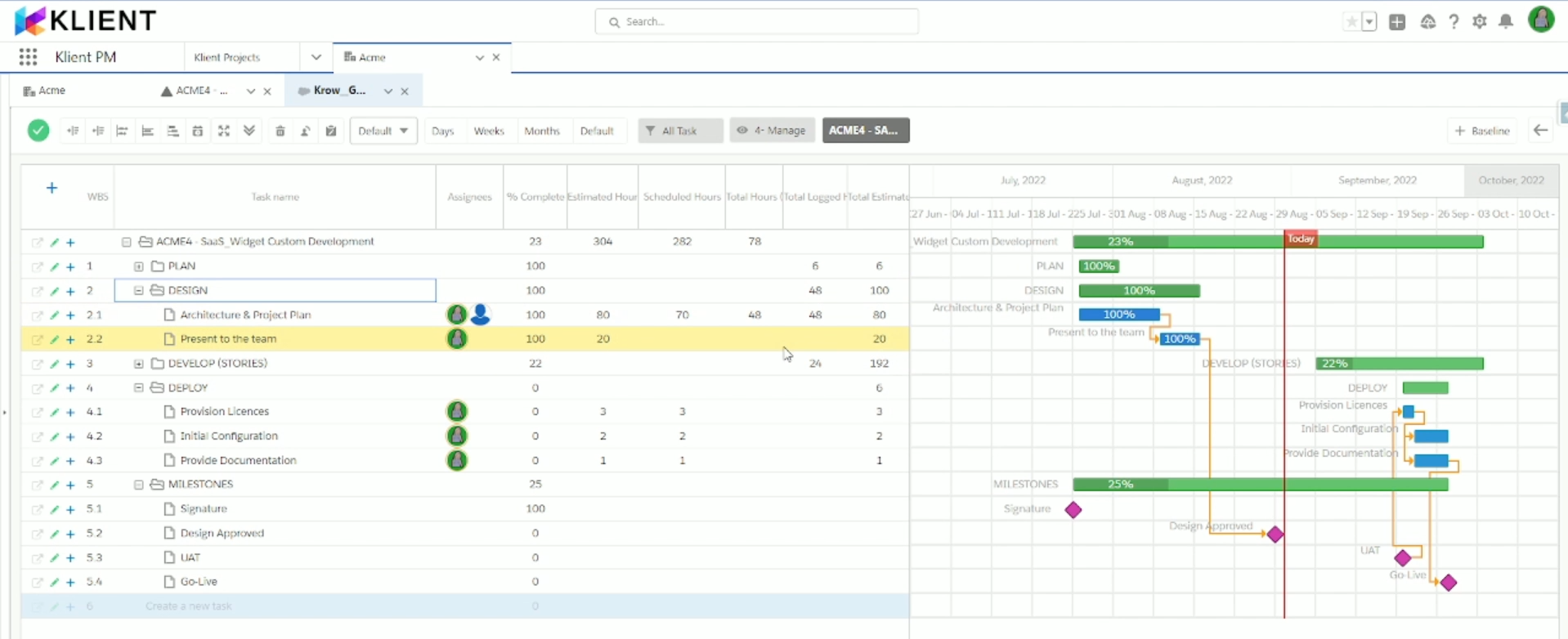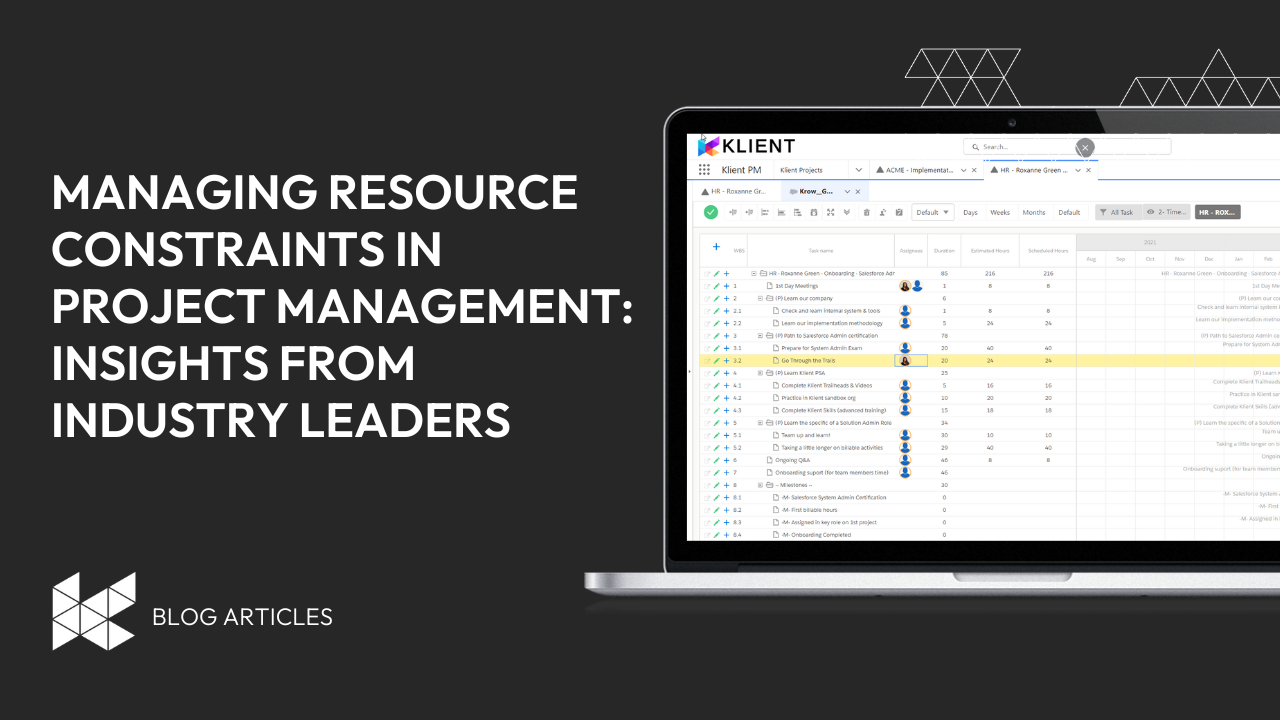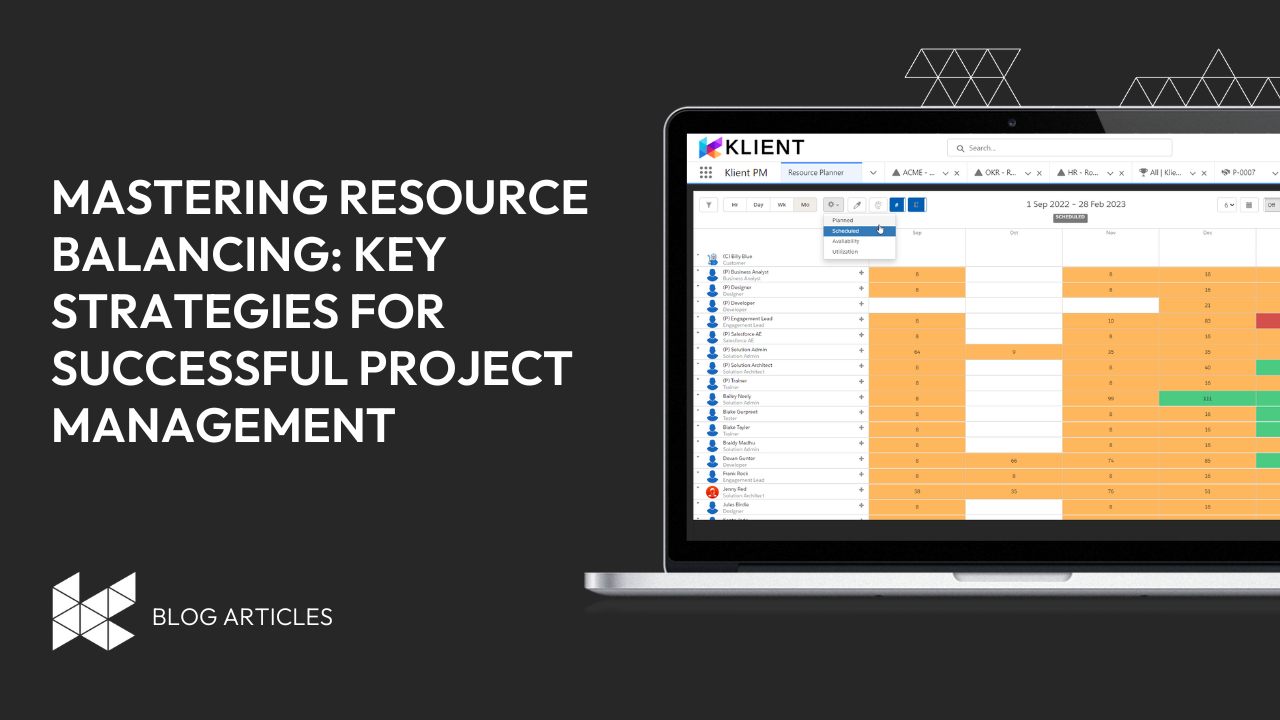
Complete Guide to Resource Leveling vs. Resource Smoothing In Project Management
While the primary goal of PMs is to ensure each project is executed as efficiently as possible to save costs, they also have to consider proper management of company assets and work-life balance for employees. Human workers are the company’s greatest resource, and their well-being should be a priority. This is where resource leveling and resource smoothing become handy. These two strategies enable PMs to look at their project plans and pinpoint problematic areas, like days when people are overworking or unrealistic deadlines given the available resources.
In this article, we’ll walk you through resource smoothing vs. resource leveling, their advantages/disadvantages, and the situations where these methods work best.
The resource management process
First, it’s important to understand the process of resource management, which involves planning, scheduling, and allocating people, technology, and money to a project. Resource management is crucial because it helps PMs prepare an inventory of existing resources, pinpoint gaps or missing information, and prioritize allocation based on the needs of different projects.
This process has three main components: resource allocation, resource leveling, and resource smoothing. The first step is resource allocation, where team members are assigned specific tasks based on their strengths and expertise. This is the planning stage, where resources are strategically placed to optimize the timeline.
However, projects might encounter resource and time constraints for various reasons. Resource leveling or smoothing is a method for anticipating these challenges and applying the right solutions and adjustments.
Here is a quick video on how resource management can work in a Professional Services Automation or Project Management Software.
What is Resource Leveling?
Based on the Project Management Body of Knowledge (PMBOK) Guide, resource leveling helps PMs evenly allocate resources by adjusting a project’s start and completion dates. This strategy ensures that no one is overworking, the equipment is available, and requirements are made clear so that there are no additional costs to the project.
Leveling works best when there are limited resources and the PMs want resource usage at a constant level. That’s why this technique is sometimes referred to as resource constrained scheduling (RCS).
There are several factors that will help PMs apply resource leveling effectively. First is knowing the dependencies or the relationships between tasks. For example, which activities must be completed before the team can move on to the next? Another factor to consider is the resource conflict. What is the main issue that needs to be solved? Is it human resources, equipment, or technology?
Finally, it is also important to look at the different types of constraints. Is it mandatory (physical limitations like lack of equipment), discretionary (team members’ preferences or actions), or external (third-party challenges)? Only after figuring out these factors can PMs create a resource leveling plan that adequately addresses the pressing concerns of the project.
According to Online PM Courses, here are some of the things PMs can do during resource leveling:
- Delay start times
- Extend planned duration
- Remove some tasks
- Allocate additional resources
- Split tasks up
- Bring tasks forward
- Assign alternative resources
In addition, there are also specific instances where resource leveling can be used:
- There is no fixed deadline (e.g., the project can be finished within the first quarter of the year).
- A resource has to be shared with another project (e.g., some teams have to work on another website for a few weeks).
- A resource is highly in-demand (e.g., laboratory equipment has to be used for three projects simultaneously).
- A resource is unavailable for a certain time (e.g., a subject matter expert won’t be available to consult until they return from their holiday).
Basically, resource leveling answers this question: Given the resources you have, when will you be able to complete the project?
Watch the complete video about What is Resource Leveling from OnlinePMCourses here:
Advantages and disadvantages of resource leveling.
Aside from re-balancing resources, leveling can offer several advantages:
- Identifying under-allocated or unused resources
- Maximizing downtimes
- Reducing project delays
- Team members can have one centralized reference that they can use to adequately prepare for their next tasks.
- Team members are working on areas/tasks that best suit their expertise
However, there might also be disadvantages to this technique, mainly because something has to be sacrificed, whether cost, scope, or time.
Other disadvantages:
- Risks of tasks delays and budget overruns
- Can be tricky to re-shuffle some tasks, especially if they’re all critical
- There might have to be additional resources (whether labor, time, or budget)
Example scenario of resource leveling:
Suppose a project is planned to be completed in two days. It has three activities (A, B, and C), and each activity takes 8 hours to complete.
Activities A and B can be done by one employee (Alex) and C by another (Jane).
At first, it would seem like A and B could be performed at the same time by Alex. However, it would take Alex 16 hours to complete both activities. This situation would lead to him being overworked on the first day.
To address this, the PM decides to extend the project to three days instead of two. Activity B is then moved to Day 2 to give Alex enough time to finish each task and evenly allocate working hours.
Resource leveling methods
Now that we’ve discussed the basics of resource leveling, let’s look at the different methods or techniques that PMs can use, depending on the urgency of the situation. There are three main methods: critical path analysis, fast tracking, and crashing.
Critical path analysis (CPA). This most common technique comprises mapping out every critical task needed to finish a project. This process includes identifying how long it would take to complete each task and the other tasks dependent on each other. CPA is a good tool to ensure that deadlines are realistic.
The first step in CPA is to define all project tasks (both critical and non-critical), and the maximum and minimum times it would take to complete these tasks. It’s also important to include slack time (or float) in the calculation to come up with a reasonable deadline.
A timeline is then created to track each task using Gantt and bar charts. CPA is often used in industries that have complicated processes. However, most CPAs are now automated using resource management software.
Fast-tracking. This resource leveling technique compresses schedules so that some tasks are completed simultaneously instead of sequentially. For example, if certain activities are not dependent on each other, they can be done on the same day. This method is particularly helpful if there is simply not enough time.
One example of this technique is creating different prototypes before a design has been approved. However, while this can save some time in the beginning, it does have the risk of being reworked if there are mistakes or massive changes to the design.
Crashing. This method is often considered the last resort, particularly if fast tracking is still insufficient. The idea behind crashing is to shorten the project duration by adding more resources (e.g., labor and equipment) with the least possible cost, including hiring extra staff or paying a premium to acquire a service faster.
This technique can become expensive real quick, so it’s best to use it when there are no other options available or when a project can no longer afford to miss its deadline.
The chart below summarizes the main differences between resource leveling vs. resource smoothing in project management.
| Resource Leveling | Resource Smoothing |
| The finish dates of the project can change | The finish dates of the product stay the same. |
| Critical paths change, mostly increasing. | You can pause activities within its float boundaries. |
| Scheduling when resources are under or over-allocated. | Scheduling is based when resources are unevenly allocated. |
| The main constraint is your resources. | The main constraint is your project end date. |
| Resource leveling can be implemented for tasks on the critical path. | With resource smoothing, you don’t alter the critical path. |
| Resource leveling is usually scheduled first. | Resource smoothing is often performed after resource leveling. |
What is resource smoothing?
We’ve discussed resource leveling and when to use it, let’s now look at the other resource optimization technique: resource smoothing. Some people might be confused about when to use resource leveling versus smoothing because they have very subtle differences.
Resource smoothing is used to balance the peaks and troughs of individual tasks after they have been leveled or re-allocated. Whereas resource leveling deals with the question of resource constraints, smoothing deals with time constraints (which is why it is also known as time constrained scheduling (TCS)).
Here are some instances where resource smoothing works best:
- There is a fixed deadline (e.g., the tasks have to be completed within their allotted timeline).
- The resources have been properly re-allocated, and the critical tasks can no longer be re-shuffled.
- Only minor tweaks are needed to smooth out the timeline (e.g., slight changes in working hours).
Advantages and disadvantages of resource smoothing
While often done at the last stages of the project, resource smoothing is a good tool to keep everyone on track. This method is particularly crucial since the project can no longer afford any delays at this point, particularly for critical activities.
Advantages:
- Project sticks to its assigned timelines
- Tasks are monitored well
- Fewer ambiguities and unexpected factors that can affect the overall schedule
Disadvantages
- No more room for flexibility
- Increased pressure to stick to the timeline
- People have to commit to their work schedules as best as they can
Example scenario of resource smoothing:
A project must be completed within three days and is once again assigned to Alex and Jane. They can both work on the project simultaneously, without any activity dependencies. The PM notices that on Day 1 and Day 2, Jane is working 10 hours while Alex is working for only 6 hours.
The PM then re-arranges the tasks on Days 1 and 2 so that they’re evenly distributed (as much as possible) between Alex and Jane. This strategy would ensure that both employees are not overburdened and can maintain the quality of their output to finish the project on time (Day 3).
The important thing to remember on resource optimization is to understand the main challenge the project is facing. Sometimes, these two techniques are done simultaneously to ensure that issues are being addressed in a timely manner. Like everything around project management, there is a time for flexibility and a time to stick to the plan.
Find out how Resource Leveling & Resource Smoothing can be done in resource management tool.
If you want a resource management tool that’s automated, flexible, and highly customizable, Klient can build one to tailor it to the needs of your business. We can help you take control and manage staffing, and allocate tasks appropriately and intuitively.
Resource Management in a PSA Software for a specific project
Resource Management in a PSA Software for all your project.
We’d love to help you out. Schedule a demo with us.

You liked this Klient Tip? Share it with your team!
Discover more articles from Klient

Replace all your tools with Klient, Salesforce #1 PSA platform
Run your entire SaaS and consulting business on a single professional service automation platform native to Salesforce!







